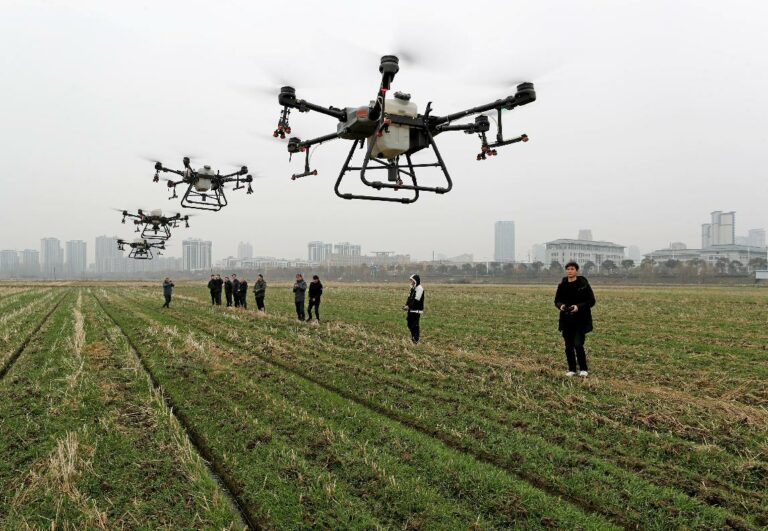
By Li Bin, People’s Daily
From controlling humidity and ventilation in vegetable greenhouses via smartphones to establishing household digital files of garbage sorting to reward the farmers who sort garbage, and to providing public services on online platforms, digital rural construction is injecting a strong impetus into China’s rural vitalization.
Promoting the construction of digital villages is an important means to realize rural vitalization. It is also vital for building a digital China.
According to an action plan for the development of digital villages between 2022 and 2025 recently issued by the Chinese government, actions will be taken to upgrade digital infrastructure, innovate and develop intelligent agriculture, develop new types and models of businesses, enhance digital governance capacity, and improve other aspects.
At present, e-commerce, mobile social networks, and digital entertainment are developing fast in rural China, but the construction of digital infrastructure is lagging. Besides, digital technologies are still exploring a way to better facilitate agricultural development, rural governance, and the life of farmers. The action plan issued this time has set a direction, phased goals, and approaches for the development of digital villages.
Thanks to the prospering development and wide application of digital technologies, remote areas are no longer remote and closed industries are opening up.
Last year, China’s rural online retail sales reached 2.05 trillion yuan ($316.4 billion), and online retail sales of agricultural products reached 422.1 billion yuan. The country has achieved remarkable progress in vitalizing rural areas with digital commerce and witnessed continuous improvement in the new infrastructure of rural e-commerce.
Compared with the traditional factors of farmland, labor, capital, and technology, data is a new type of productive factor. Building digital villages is about not only bringing more capital, technologies, human resources, and materials to rural areas but also creating brand-new development and governance models for rural vitalization, so as to promote digital transition in traditional agricultural production, operation, and trade.
Chinese rural areas differ in natural conditions, development levels, and local features. Digital rural construction is able to pave a road for rural vitalization with local characteristics.
Digital rural construction will open vast space for rural vitalization and high-quality agricultural development, be it the new agricultural production models of smart farms, smart grazing lands, and smart fish farms, the new business models of intelligent rural tourism, creative agriculture, and customized agriculture, or the promotion of digital inclusive financing and e-commerce.
Besides, intelligent green villages, digital rural governance, and rural internet culture are also important parts of digital rural construction.
Integrating rural vitalization with digitalization will help promote equal access to resources and opportunities between urban and rural areas. It has a profound impact on coordinating development between urban and rural areas, and between regions.
As a matter of fact, digital technologies have already played a huge role in China’s poverty alleviation. For instance, information technology was used to spot those falling into poverty because of accidents, track follow-up development of those lifted out of poverty, and make plans to prevent the recurrence of poverty.
In the future, China will further promote mobile applications, e-government, e-commerce logistics, and Livestream marketing among farmers according to reality, so as to constantly improve their digital literacy and bring them more development dividends in the digital era.










